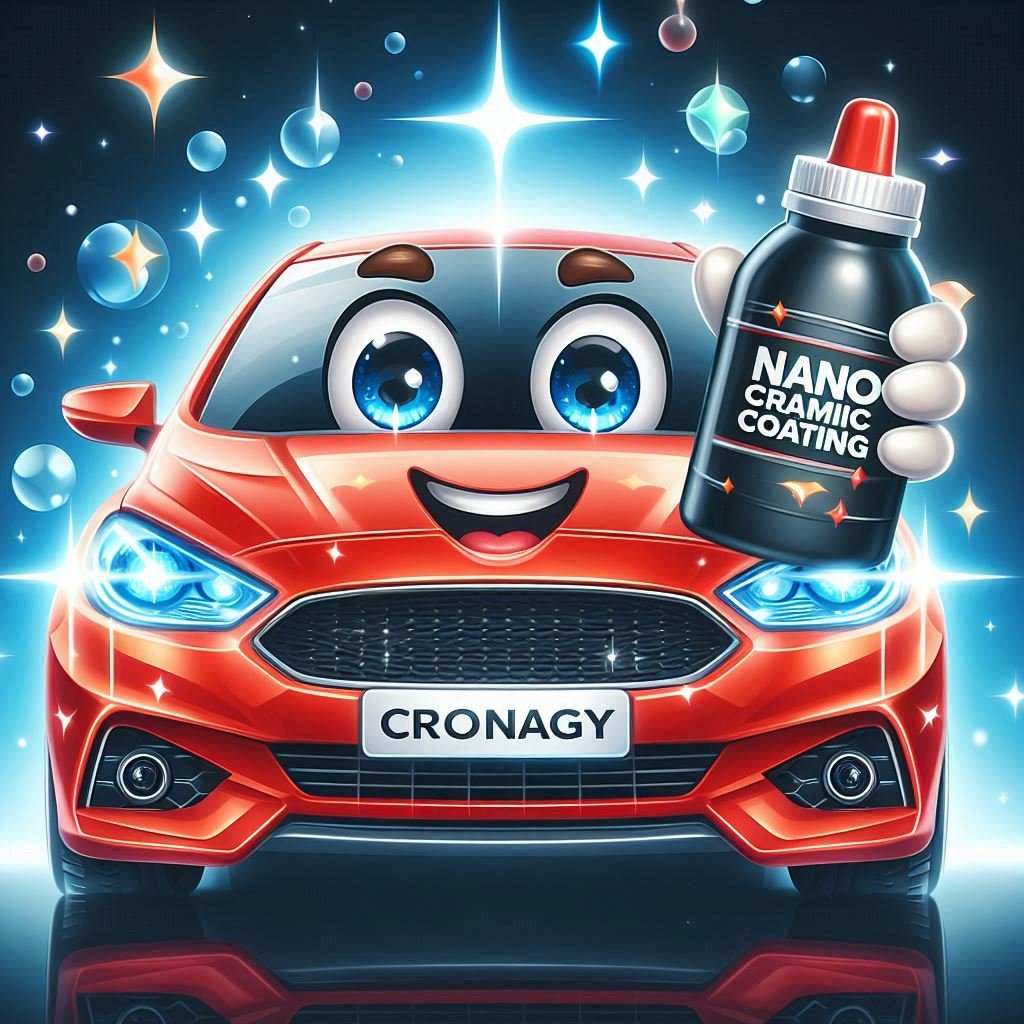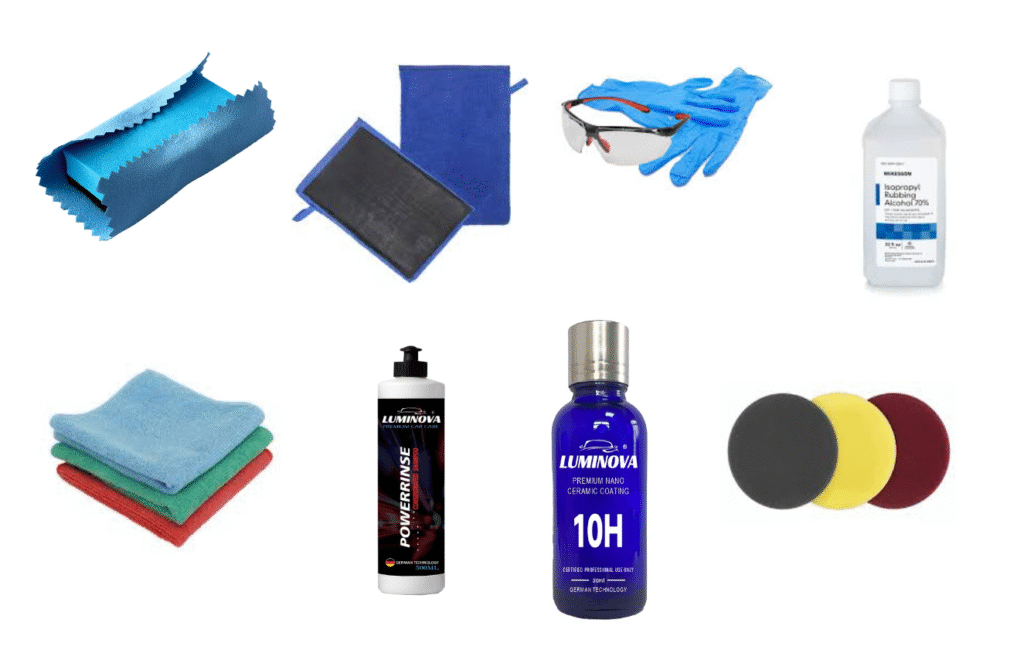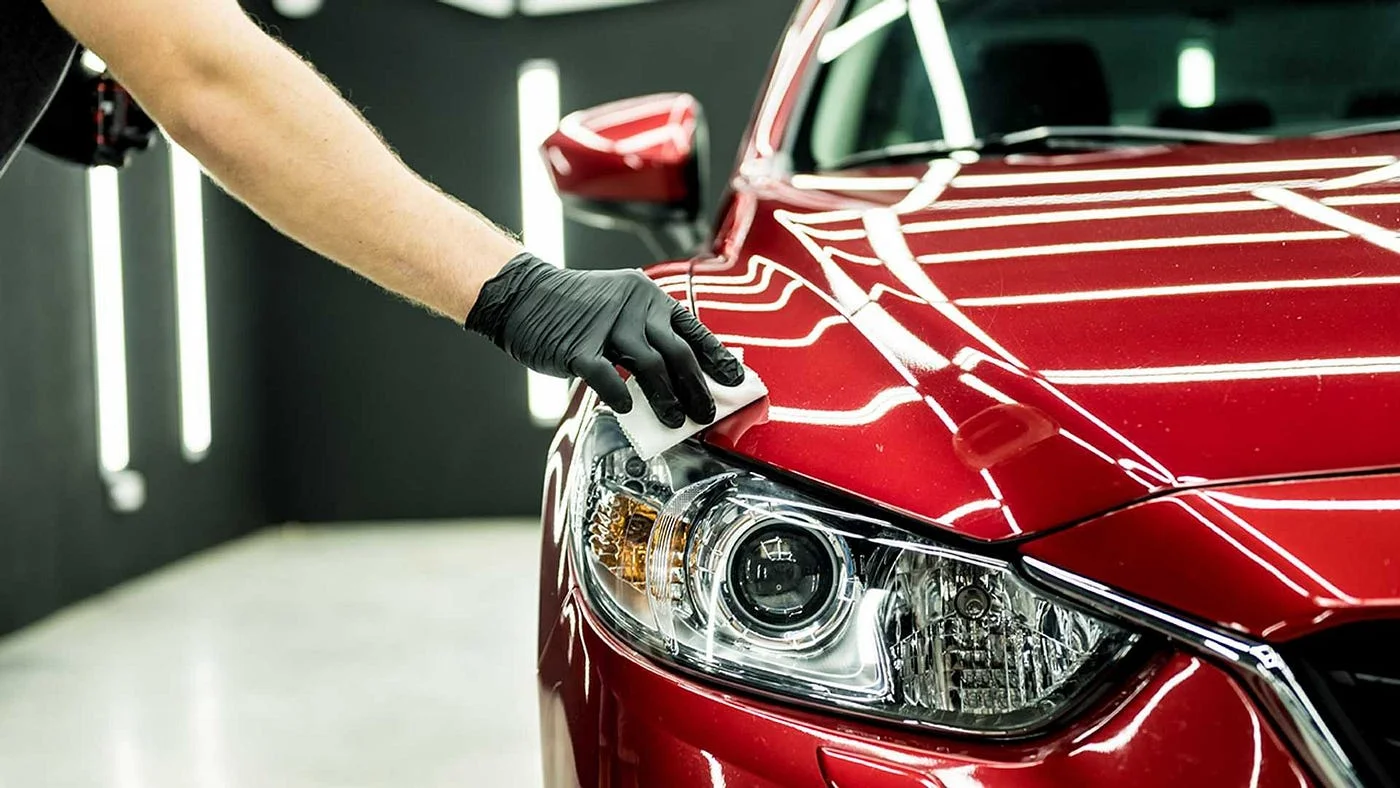Beginner’s Guide to Nano Ceramic Coating – Get a Showroom Shine
By Ammar Hassan Merie | August 16, 2025

Introduction
Nano ceramic coating is one of the most advanced ways to protect your vehicle’s paint, enhance its gloss, and make cleaning easier. It works by bonding nano-sized ceramic particles to the paint surface, forming a durable, transparent, and hydrophobic shield.
Whether you choose a professional application or a high-quality DIY kit, following the correct process is crucial for achieving a flawless, long-lasting finish.
Understand What Nano Ceramic Coating Does
Before applying nano ceramic coating, it’s important to know what you’re working with:
- Protection – Shields against UV rays, oxidation, bird droppings, acid rain, and road grime.
- Gloss & Shine – Adds a deep, reflective finish that lasts for years.
- Hydrophobic Properties – Water and dirt bead off easily, reducing cleaning time.
- Scratch Resistance – Helps guard against minor scratches and swirl marks.
- Longevity – Lasts 2–5 years (or longer with premium 9H/12H coatings) when properly maintained.
Gather Tools & Materials
You’ll need:
- pH-neutral car shampoo
- Clay bar or clay mitt for surface decontamination
- Microfiber towels (plush, lint-free)
- Applicator block & suede applicator cloths
- Isopropyl alcohol (70% or higher) for final wipe-down
- Ceramic coating product (e.g. Luminova Premium Nano Ceramic Coating 10H)
- Polisher & pads (optional, for paint correction)
- Gloves & safety glasses – for personal protection
- Well-lit, dust-free workspace

Well-lit, dust-free workspace
The coating will lock in whatever is on your paint — both the good and the bad. Proper prep ensures a perfect finish.
Step 1: Thorough Wash
- Use pH-neutral shampoo and the two-bucket method.
- Remove all dirt, dust, tar, and grime.
- Rinse thoroughly and dry with a microfiber towel.
Step 2: Surface Decontamination
- Use a clay bar or clay mitt with lubricant to remove bonded contaminants like tree sap, rail dust, or industrial fallout.
- This creates a smooth surface for the coating to bond.
Step 3: Paint Correction (Optional but Recommended)
- If you see swirls, light scratches, or oxidation, polish the surface with a dual-action polisher.
- A swirl-free finish will maximize gloss and ensure the coating bonds uniformly.
Step 4: Final Wipe-Down
- Use an isopropyl alcohol (IPA) mix (1:1 with distilled water) to remove oils, polish residue, or fingerprints.
- This leaves a completely clean, bare surface ready for coating.
Application Process
Step 1: Apply the Coating
- Wrap the suede cloth around the applicator block.
- Drip 6–10 drops of coating onto the cloth.
- Apply to a small section (e.g., half a hood) in crosshatch pattern (horizontal, then vertical strokes) for even coverage.

Step 2: Flashing & Buffing
- Wait for the “flashing” stage — the coating will appear as a rainbow or haze (check product instructions for timing — typically 30 sec to 2 min).
- Using a clean microfiber towel, lightly buff the surface to remove excess product and avoid streaks.
- Use a second towel for a final wipe.
Step 3: Continue Panel by Panel
- Work around the vehicle in sections.
- Avoid overlapping wet and dry areas to maintain an even finish.
Curing the Coating
- Allow the coating to cure as per manufacturer instructions (usually 12–24 hours).
- Keep the vehicle indoors and away from moisture during this period.
- Avoid washing the car for at least 7 days after application for full chemical bonding.
Post-Application Maintenance
Nano ceramic coating is low-maintenance but not maintenance-free.
- Wash every 2–3 weeks with pH-neutral shampoo.
- Avoid automated car washes — they can cause micro-scratches.
- Use microfiber drying towels to prevent water spots.
- Boost with a ceramic spray every 3–6 months to maintain hydrophobic properties.
- Remove contaminants like bird droppings quickly to avoid etching.
Pro Tips for Best Results
- Less is more — don’t over-apply; a thin, even layer bonds better.
- Work in a climate-controlled space to avoid premature drying or uneven curing.
- Always follow the specific instructions of your chosen coating brand — cure times, application method, and number of layers can vary.
Conclusion
Nano ceramic coating is one of the best ways to protect your car’s paint and keep it looking brand new. By following this step-by-step guide — from meticulous prep to careful application and maintenance — you can achieve a professional-grade finish that lasts for years.
If you want maximum durability and flawless results, consider having it applied by a certified detailer with the right equipment and environment.
FAQs
What is nano ceramic coating?
Nano ceramic coating is a liquid polymer applied to a car’s paint that chemically bonds with the surface to create a durable, hydrophobic, and glossy protective layer.
How long does nano ceramic coating last?
With proper care, a high-quality ceramic coating can last between 2 and 5 years. Some premium coatings may last even longer.
Can I apply ceramic coating myself?
Yes, DIY application is possible, but for best results, follow proper preparation steps and work in a clean, controlled environment.
Does ceramic coating make my car scratch-proof?
No coating is 100% scratch-proof, but ceramic coatings help resist minor scratches and swirl marks.
Can ceramic coating be applied over wax or sealant?
No. The surface must be completely clean and free of wax, sealants, and contaminants for the coating to bond properly.
How do I maintain a ceramic-coated car?
Wash regularly with pH-neutral shampoo, avoid abrasive tools, and use ceramic boost sprays every few months.
Will ceramic coating prevent water spots?
It reduces the chances, but hard water can still leave spots if not dried promptly.
Can ceramic coating be removed?
Yes, but it requires polishing or paint correction to remove the bonded layer.
How long should I wait before washing the car after coating?
Avoid washing for at least 7 days to allow full curing.
Is ceramic coating better than waxing?
Yes, ceramic coating lasts years, offers stronger protection, and enhances gloss more than wax, which typically lasts only weeks.






